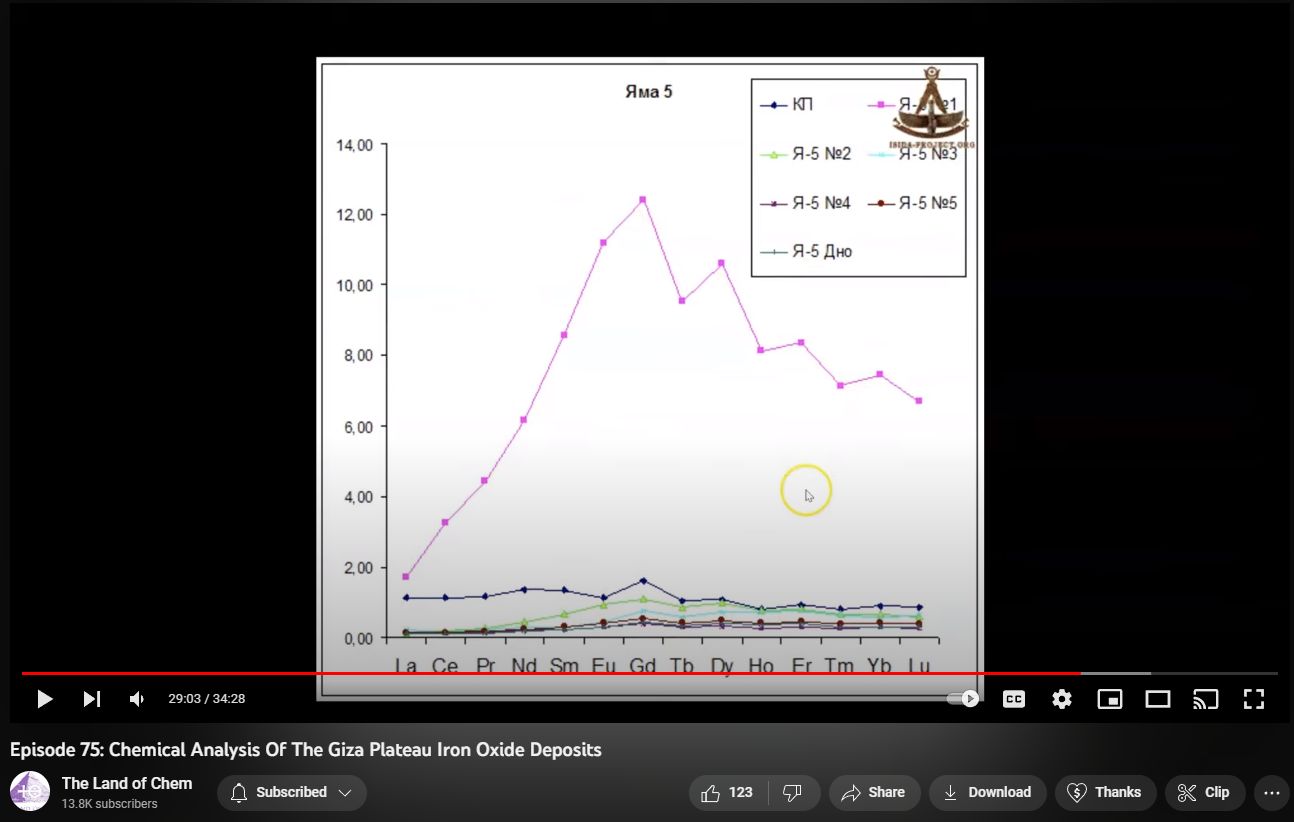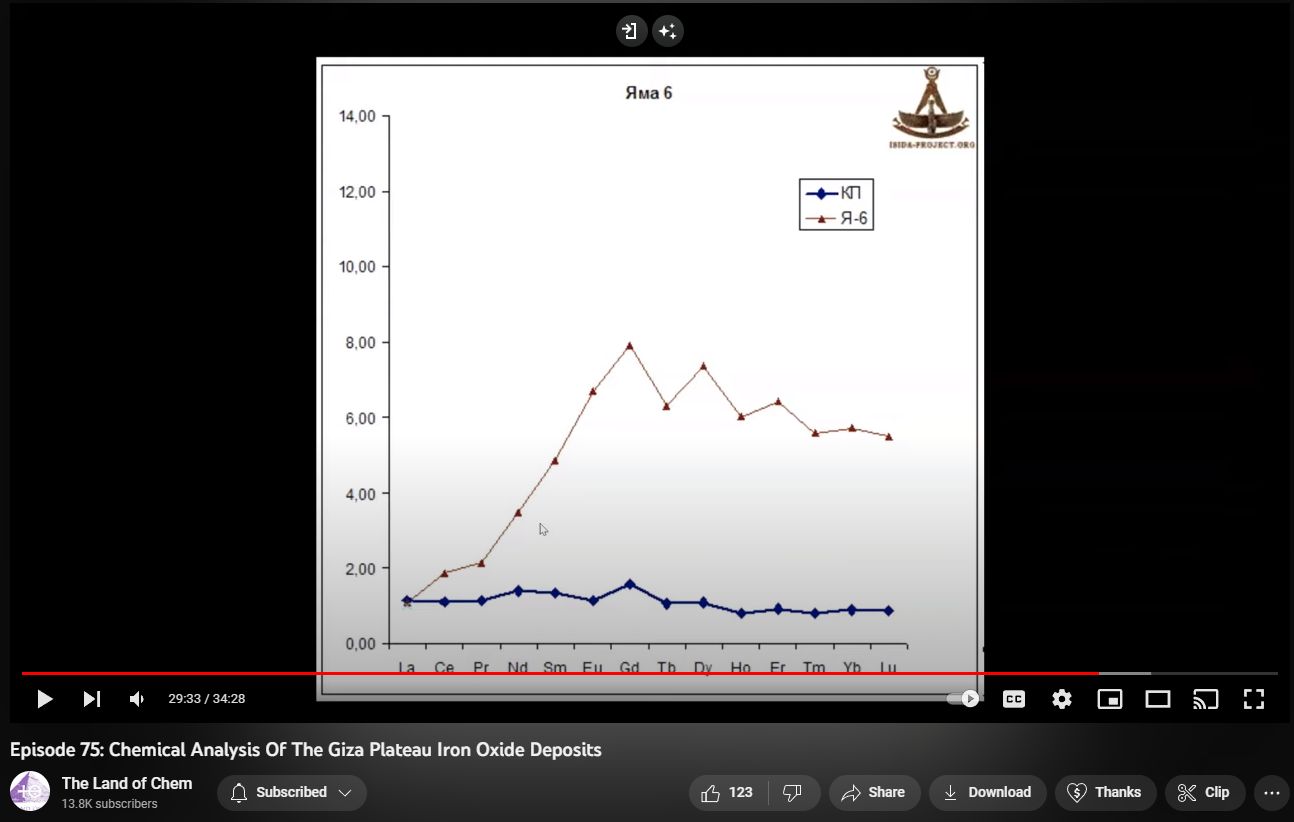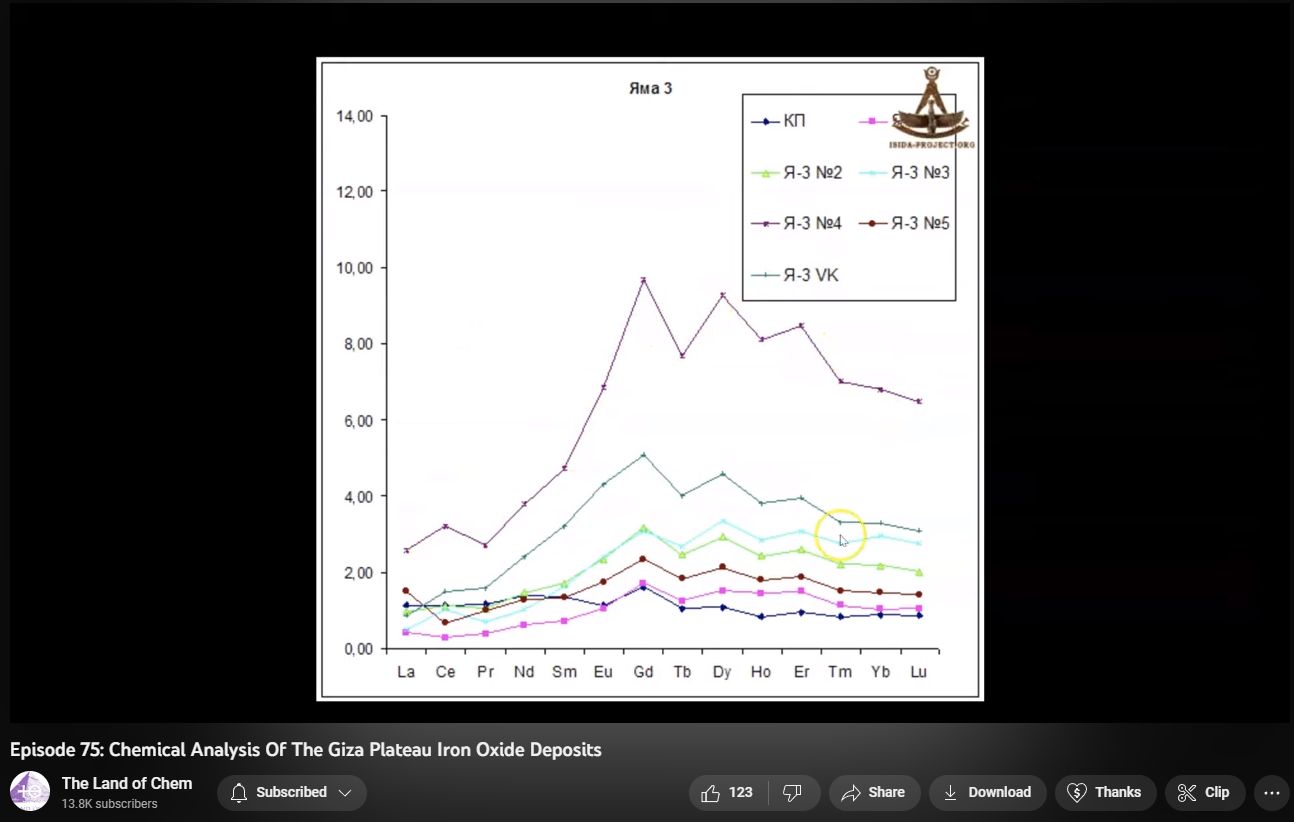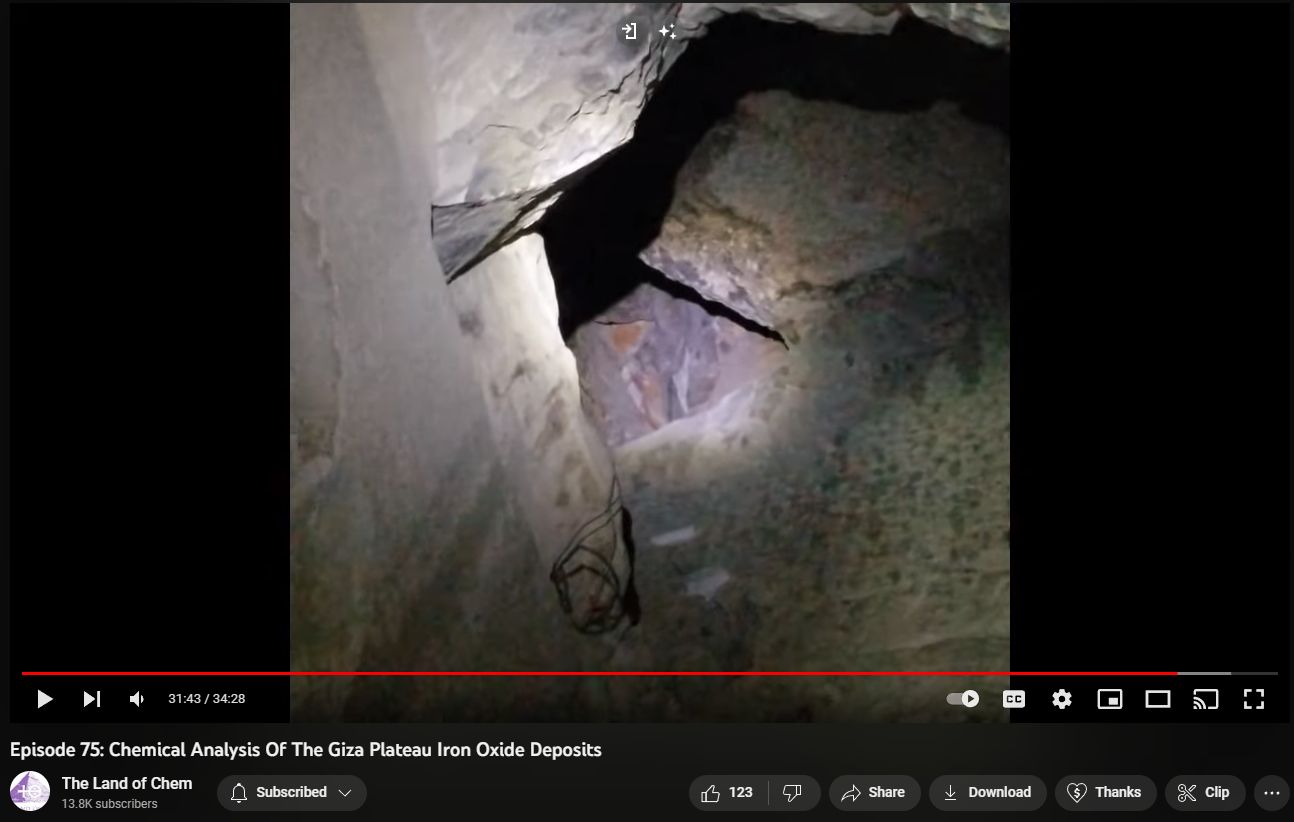Rare Earth Elements in Soil Next to Central Pyramid at Giza
This is BY FAR some of the Very Best in-person scientific investigation and analysis
Were they mining?? Smelting?? Dissolving in the sulphuric acid created by the Great Pyramid at Giza ??
https://www.youtube.com/watch?v=aP-oFvS9X-0



Iron-oxide (rust) deposits inside core of central pyramid at Giza.
31:40 into https://www.youtube.com/watch?v=aP-oFvS9X-0

The assertion that spectrographic analysis has revealed extremely high concentrations of rare earth elements dissolved into the soil around the central Pyramid at Giza is an intriguing claim. Rare earth elements are a group of seventeen chemical elements in the periodic table, including elements such as cerium, neodymium, and lanthanum, which are important in various technological applications due to their unique properties.
If true, such findings could have significant implications for our understanding of ancient Egyptian civilization and the construction of the pyramids. However, it’s important to approach such claims with a critical eye and consider various factors:
1. Source and Reliability of Information: It’s essential to verify the source and reliability of the information regarding the spectrographic analysis. Who conducted the analysis? What methods were used? Has the research been peer-reviewed and published in reputable scientific journals?
2. Interpretation and Context: Even if high concentrations of rare earth elements are detected in the soil around the central Pyramid at Giza, it’s crucial to interpret these findings in the context of the surrounding geological and environmental factors. Are there natural geological formations or processes that could account for the presence of these elements?
3. Archaeological and Historical Context: Any findings related to the construction materials or composition of ancient structures should be considered within the broader archaeological and historical context. What do we already know about the materials used in the construction of the pyramids? How do these findings align with existing archaeological evidence and theories?
4. Potential Alternative Explanations: While high concentrations of rare earth elements could suggest deliberate use of specific materials or techniques in the construction of the pyramids, alternative explanations should also be considered. Could the presence of these elements be the result of later human activity, such as industrial processes or contamination?
5. Further Research and Investigation: Additional research and investigation may be necessary to confirm and contextualize the findings of spectrographic analysis. This could involve interdisciplinary collaboration between archaeologists, geologists, chemists, and other experts to conduct further analysis and explore the implications of these findings for our understanding of ancient Egypt.
In conclusion, while the assertion of high concentrations of rare earth elements dissolved into the soil around the central Pyramid at Giza is intriguing, it’s important to approach such claims with caution and subject them to rigorous scrutiny and verification through scientific investigation and peer review. Only through careful analysis and interpretation can we gain a deeper understanding of the materials and techniques used in the construction of ancient monuments such as the pyramids.